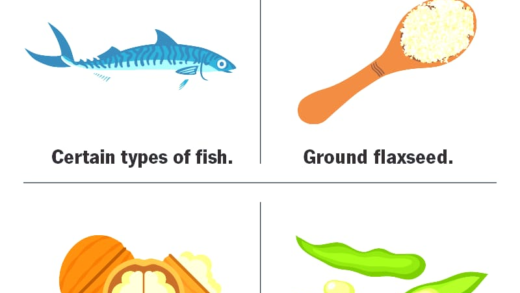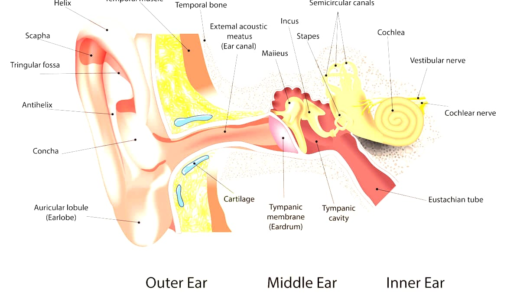Tornadoes result from severe thunderstorms and can cause devastating damage. This article covers their formation, classification, safety tips, and famous historical events related to tornadoes. Understanding tornadoes helps communities prepare and stay safe during severe weather.
What Causes Tornadoes
Tornadoes are powerful storms characterized by rotating columns of air that extend from a thunderstorm to the ground. The primary factor that causes tornadoes is severe thunderstorms, particularly supercells. These supercells create the right conditions for tornado formation, including:
- Warm, moist air: This air rises and cools, forming clouds.
- Cold, dry air: This air sinks and can create instability in the atmosphere.
- Wind shear: Changes in wind speed and direction at different altitudes can lead to rotation.
When these elements interact, they can form a rotating updraft called a mesocyclone. If conditions are favorable, this rotation can tighten and extend downward, creating a tornado. Understanding these factors helps meteorologists predict when and where tornadoes might occur, ultimately saving lives.
How Do Tornadoes Rotate
The mechanics of tornado rotation can be complex, but the basic principle is simpler than it seems. Tornadoes rotate due to the interaction of air masses with different temperatures and moisture levels. Here’s how it works:
- Updrafts: Warm air rises quickly within a thunderstorm, creating a powerful updraft.
- Rotation: Wind shear creates a horizontal spinning effect, which is tilted vertically by the updraft.
- Tightening: As the air rotates faster, it tightens and extends downward to form a tornado.
In essence, think of it like a figure skater spinning faster as they pull their arms in. The faster rotation is a result of the air being funneled into a smaller area. This rotation is what allows tornadoes to be so destructive.
Stages of Tornado Development
Tornadoes go through several distinct stages during their development. Understanding these stages can help in recognizing the signs of an impending tornado:
- Formation: The initial development of a mesocyclone within a thunderstorm.
- Touchdown: The tornado extends from the cloud base to the ground.
- Mature stage: The tornado reaches its peak intensity, often causing severe damage.
- Dissipation: The tornado begins to weaken and eventually disappears.
Each stage presents unique characteristics and risks. Knowing these stages can help individuals prepare for the possibility of a tornado, enhancing safety measures during severe weather events.
How Meteorologists Determine Tornado Strength
Tornadoes are classified based on their strength, which meteorologists determine using various methods and factors. The main tool for assessing tornado strength is the Enhanced Fujita Scale, which ranges from EF0 to EF5. Here’s what meteorologists consider when rating tornado strength:
- Damage Assessment: Experts examine the damage caused by the tornado to buildings, trees, and vehicles. This includes noting the types of structures affected.
- Wind Speed Estimates: Wind speeds are estimated based on the observed damage. Each level on the Fujita scale corresponds to a range of wind speeds.
- Location and Path: The geographical area affected and the tornado’s path are crucial in determining its strength and impact.
By combining these observations, meteorologists can accurately rate the strength of a tornado. Understanding tornado strength helps in predicting future tornadoes and preparing communities for severe weather.
Tornado Classification Scale
The tornado classification scale is essential for understanding the potential impact of a tornado. The Enhanced Fujita Scale is the most widely used system today. It categorizes tornadoes into six levels:
- EF0: Wind speeds of 65-85 mph. Minor damage, such as broken tree branches.
- EF1: Wind speeds of 86-110 mph. Moderate damage, including roof shingles torn off.
- EF2: Wind speeds of 111-135 mph. Significant damage, like uprooted trees.
- EF3: Wind speeds of 136-165 mph. Severe damage, such as entire stories of well-built homes being destroyed.
- EF4: Wind speeds of 166-200 mph. Devastating damage, with well-constructed houses leveled.
- EF5: Wind speeds over 200 mph. Incredible damage, where strong frame houses are swept away.
These classifications help communities prepare for and respond to tornado threats effectively. Knowing the scale provides insight into what kind of destruction can be expected.
Types of Tornado Damage
Tornadoes can cause various types of damage, which can vary significantly based on their strength. Understanding these types of damage is crucial for preparedness:
- Structural Damage: This includes destruction of buildings, homes, and infrastructure. Stronger tornadoes can completely obliterate well-built structures.
- Vegetation Damage: Trees can be uprooted, snapped, or stripped of bark, leading to significant ecological changes.
- Flying Debris: Tornadoes can turn everyday objects into dangerous projectiles, causing injuries and additional damage.
- Power Outages: Tornadoes often knock down power lines, leaving communities without electricity.
Being aware of these types of damage helps individuals and communities take preventative measures. It’s vital to have a plan in place to minimize risks associated with tornadoes.
Famous Tornadoes in History
Tornadoes have left a significant mark on history, with some infamous events standing out due to their devastating impact. Among the most notorious tornadoes is the Tri-State Tornado of 1925, which carved a path through Missouri, Illinois, and Indiana. This tornado remains the deadliest in U.S. history, claiming over 600 lives and injuring thousands. Another notable event is the Joplin Tornado of 2011, which resulted in 158 fatalities and caused around $2.8 billion in damages, making it one of the costliest tornadoes ever recorded.
These incidents highlight the destructive power of tornadoes and the necessity for effective warning systems. Each tornado event teaches us vital lessons about preparedness and resilience in the face of nature’s fury. Communities affected by these storms often come together to rebuild and recover, demonstrating human strength in adversity.
Tornado Safety Tips
Staying safe during a tornado is paramount, as these storms can strike with little warning. Here are essential tornado safety tips:
- Have a plan: Identify a safe location, such as a basement or an interior room on the lowest floor of your home.
- Stay informed: Use a weather radio or mobile app to receive real-time updates and alerts about tornado watches and warnings.
- Protect yourself: If you are caught outside, lie flat in a low area or seek shelter in a sturdy building.
- During a tornado: Use heavy furniture or cushions to shield yourself from flying debris.
- After the tornado: Stay away from downed power lines and report them to authorities. Check for injuries and assist others if safe to do so.
By following these safety tips, individuals and families can increase their chances of survival during tornado events.
Tools Used to Study Tornadoes
Scientists utilize various tools to study tornadoes and improve prediction methods. Doppler radar is crucial for detecting rotation within storms, allowing meteorologists to issue timely warnings. Mobile radar units can be deployed to collect data directly from tornadoes, providing insights into their structure and behavior.
Additionally, storm chasers use anemometers to measure wind speeds and specialized cameras to document tornado events. These technologies enhance our understanding of tornado formation and lead to better forecasting models, ultimately saving lives.
Connection Between Tornadoes and Thunderstorms
Tornadoes and thunderstorms are closely linked, as tornadoes typically form from severe thunderstorms known as supercells. The conditions that lead to tornado formation, such as warm, moist air and wind shear, are common in these storms. Understanding this relationship is vital for predicting tornado occurrences and enhancing community preparedness.
When thunderstorms develop, monitoring their characteristics can provide crucial information about the potential for tornado formation. By studying these connections, meteorologists can improve forecasting accuracy, which is essential for public safety.





Comments are closed.